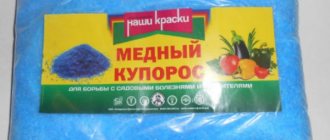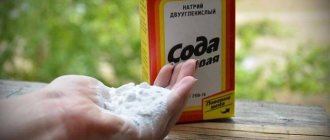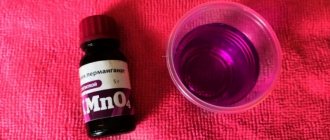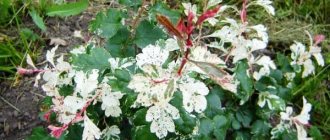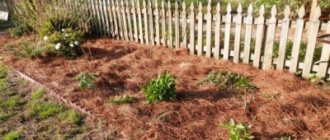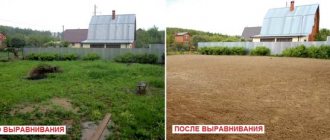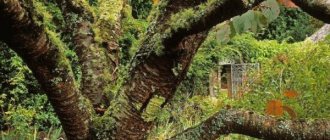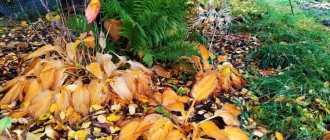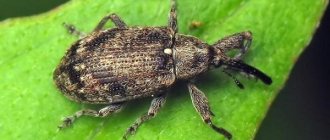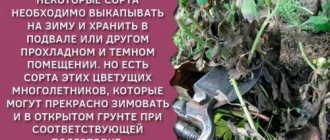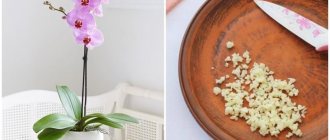If there is a significant amount of precipitation in the warm season, it is necessary to begin the fight against various diseases in advance. This is required because late blight, powdery mildew, scab and other diseases may appear in the garden next year. Dampness penetrates everything. It brings with it fungal spores and other infectious diseases. They disperse throughout the beds, gardens and greenhouses. It is necessary to get rid of the infection - plant growers use copper sulfate (CuSO₄·5H₂O). This powerful fungicide helps get rid of harmful insects.
Why treat the soil with copper sulfate in the fall?
In order to prevent the spread of pathogens of infectious diseases in the garden, garden and greenhouses, copper sulfate is used in small volumes. It has the following effect:
- Vegetation develops some protection against disease.
- Fungal spores are eliminated, and with the concomitant use of binding components - a solution of laundry soap, copper sulfate remains on the foliage and shoots, preventing fungi from attaching to them.
- When treating the soil with copper sulfate, the characteristics of the soil increase, and plants, provided microadditions of copper, better absorb nutrients.
- Plants that have been treated with copper sulfate in the fall endure the winter season more easily.
But it is prohibited to constantly use copper sulfate during autumn processing. This compound tends to accumulate and can have the opposite effect:
- Significant concentrations of copper in the soil lead to disruption of the interaction of a number of macro- and microelements.
- The permeability of the soil to air is disrupted and the amount of nitrogen absorbed from the environment decreases.
- Copper sulfate in excess concentrations in the soil leads to a slowdown in the spread of phosphorus preparations with which the site was fertilized.
- In the upper soil layer, the vital activity of microflora is inhibited - aerobic microorganisms begin to process the organic component worse. Rotting slows down.
- Iron oxide does not actually reach the vegetation due to its replacement with copper.
Attention! The frequency of application of copper sulfate depends on the soil characteristics. Super sandstones and loams require more frequent treatments. Sandy soils require less frequency.
The use of copper sulfate in gardening and vegetable growing
Remember, copper sulfate is used in gardening:
- NOT for insect control;
- NOT for tick control;
- NOT for rodent control;
- NOT for plant rejuvenation;
- NOT for increasing yield - it is NOT a growth stimulant.
Copper sulfate is a contact copper-containing fungicide. Fungicide – therefore, to combat fungi. Contact - therefore, it does not penetrate into the plant, acts only in the spot of contact with the plant and, after being washed off with water, ceases to act completely. Copper-containing - therefore, the active ingredient in it is copper.
In addition, vitriol can be used for feeding if there is a copper deficiency. You can read about this at the end of the article.
How does copper sulfate act on mushrooms?
Many proteins have so-called sulfhydryl groups - in them, sulfur is bonded to hydrogen on one side and to a hydrocarbon chain on the other. Among these proteins there are also enzymes - proteins, thanks to which certain metabolic reactions take place in the body. Mushrooms also have such enzymes.
Proteins also have amino groups - approximately the same thing, but instead of a sulfur atom there is a nitrogen atom.
The copper ion from vitriol binds to such sulfhydryl and amine groups, which leads to malfunction and destruction of the protein. If this is an enzyme, then it stops working, and the metabolism in the mushroom hole is disrupted. In addition, copper sulfate is able to accelerate oxidative reactions in the cell, disrupting the overall balanced metabolism.
Article on the topic: Properties of potassium permanganate, use against diseases and as a fertilizer
At a higher level, this means that the spores and conidia of fungi do not have enough strength to germinate and they die. The growth of already formed mycelium also slows down, although this mechanism does not play a significant role. In addition, copper cannot penetrate deep into plant tissues: therefore, the mycelium inside the plant is well protected from copper sulfate.
Diseases
In gardening, copper sulfate is used to protect trees from:
- coccomycosis of cherries, plums and other stone fruits;
- peach leaf curl (caused by the fungus Taphrina deformans). By the way, it’s not just the peach that amazes;
- clusterosporiasis;
- moniliosis;
- anthracnose on gooseberries and currants;
- septoria on them;
- apple scab;
- some pome spots;
- some downy mildews.
Copper sulfate has a weak effect against true powdery mildew, but still slightly slows down the growth of mycelium.
Instructions for using copper sulfate in gardening to protect trees
Copper sulfate is used both independently and for preparing Bordeaux mixture, which we will discuss in a separate article.
Tree treatment in spring
The first spraying with copper sulfate is carried out in the spring, before the buds open. To prepare the working solution, you need to dissolve 100 grams of copper sulfate in 10 liters of water. The working solution should be prepared in glass, plastic or enamel containers. You cannot cook in iron cookware, because more active iron will displace copper from the salt. Not only the tree itself is sprayed, but also the soil around it. Working fluid consumption is 10 liters per 100 m2.
Some authors recommend using a 2.5...3% solution of copper sulfate for spraying, but this is a debatable issue and requires additional study. If we come across convincing data on effectiveness, they will definitely be published in this material.
Tree treatment in autumn
Everything is exactly the same as in spring, but after the leaves fall.
Restrictions
There is an opinion that frequent treatments can lead to the accumulation of copper in the soil, which is harmful, including for plants. Let's try to figure out how fair this is.
The maximum permissible concentration of copper in soil is 3 mg per kg of weight. The density of arable land is about 1.3 g/cm3 = that is, the mass of one cubic meter of soil is about 1300 kg.
The mass fraction of copper in copper sulfate (that is, copper sulfate pentahydrate) is about 25%. Thus, with one treatment, about 25 grams of copper fall into an area of 100 m2.
Let us assume (although this is not true) that all this copper completely enters the soil and settles forever in the upper layer 2 meters thick, where the bulk of plant roots are located. Thus, 25 grams of copper will be distributed over 200 cubic meters of soil. Therefore, for 1 kg of soil you will have:
25 / (200x1300) = 0.000096 grams or 0.096 milligrams. That is, the MPC can be accumulated by the soil after 30 such treatments, if copper does not migrate at all in the soil and is carried out with the green mass of plants, which is impossible.
Processing during the growing season
Spraying with copper sulfate during the growing season is carried out as part of Bordeaux mixture or other fungicides. We plan to publish instructions for using Bordeaux mixture in a separate material. You should not spray vegetating trees with a pure solution of copper sulfate, since it is acidic and can burn the green parts of the plants. Therefore, acidity is neutralized by adding lime.
Using copper sulfate for foliar feeding
Foliar fertilizing is used if it is known for sure that there is an insufficient concentration of copper in the soil (as a rule, these are peat-bog soils and some sandy soils - for example, in the Rostov region), or if there is a pronounced copper deficiency in plants.
Copper deficiency in plants manifests itself primarily on young shoots and leaves in the form of chlorosis, leaf shrinkage and the appearance of necrotic spots. As you can see, the symptoms are quite nonspecific - so it is better to do a soil analysis.
Foliar feeding is carried out at 0.01%. 0.02% solution of copper sulfate - that is, dissolving 1..2 grams of copper sulfate in 10 liters of water. It is better to prepare such a solution in two stages - first dissolve the vitriol in 200..500 ml of warm water, and then stir it with the rest. Plants should be sprayed in calm, warm, preferably cloudy weather.
Safety
Without this, our instructions for using copper sulfate in gardening would be incomplete.
If a solution of copper sulfate gets on your skin, you can simply ignore it, but it is better to protect your eyes and mucous membranes. Spray with copper sulfate wearing a bandage or respirator. If the solution gets into your eyes, rinse them with clean water.
Advantages of autumn application
In the autumn, treatment is carried out for preventive purposes. The time for performing the activity is chosen after the leaves have completely fallen from the trees. In this case, the area must already be completely cleaned and prepared for the winter season.
Spraying fallen leaves causes the copper sulfate solution to attack the fungal spores present and completely destroy them.
Also, treating a garden or vegetable garden with copper sulfate in the autumn season has other positive aspects. During the cold season, insects hide in tree bark and soil near the roots of vegetation.
In order to guarantee the prevention of a widespread attack of pests on garden crops next year, it is necessary to treat the following areas with copper sulfate solutions:
- priming;
- plant shoots;
- crevices and cracks in the bark.
Treating the area with copper sulfate makes it possible to eliminate single representatives of harmful insects. The drug also destroys pest colonies in areas where parasites concentrate in preparation for hibernation.
Fungicidal and insecticidal properties of copper sulfate
Most often, copper sulfate is used to combat fungal diseases of plants. Its toxic effect on pathogens develops according to the following scheme:
- copper ions bind to enzyme complexes of fungal cells;
- the cell cytoplasm coagulates and denaturation of proteins occurs;
- The Krebs cycle, which ensures cell respiration, is interrupted.
A similar process occurs when copper sulfate interacts with insect cells. But in this case, the drug acts more selectively, showing high toxicity towards eggs and larvae of pests.
Properties and composition
Copper sulfate is an inexpensive preparation that is sold in hardware stores and organizations that sell products for plant growers. It is sold in the form of blue or deep blue crystals.
When the crystalline substance is heated, the liquid evaporates from them and they acquire a lighter shade. With prolonged heating, the substance acquires a faded gray color. Copper sulfate is a non-flammable material, but in some situations it is explosive.
The properties of crystallized copper sulfate are as follows:
- the substance quickly dissolves in liquid;
- quickly absorbs water – significant hygroscopicity;
- dissolves in alcohol and hydrochloric acid.
Copper sulfate is a strong toxic substance, the handling of which requires extreme caution and absolute adherence to safety regulations.
Attention!
If copper sulfate enters the human body, it leads to serious poisoning; if small amounts are swallowed, you must immediately rinse the stomach and call emergency medical attention.
Copper sulfate (copper sulfate 2) – formula, properties
Copper sulfate or copper sulfate II is a salt that is formed by the reaction of copper or copper oxide with sulfuric acid. The formula of copper sulfate is CuSO4.
In anhydrous form, copper II sulfate has the appearance of small, colorless crystals without taste or odor. True, it is rarely anhydrous and only at low air humidity. This is a very hygroscopic substance: it easily absorbs moisture with the formation of crystalline hydrates. The most common is copper sulfate pentahydrate, in which one molecule of salt is bonded to five molecules of water. Moreover, the bond between water and the copper ion is even slightly stronger than between the copper ion and the sulfuric acid residue.
Pentahydrate has a characteristic bright blue color. This is what is usually called copper sulfate. He's in the photo.
Concentrations
Copper sulfate is used in plant growing in the form of solutions. Often several variants of liquid preparations are mixed. The main difference between copper sulfate solution is the proportional content of the crystalline substance in the water.
Feeding composition
Concentrations of 2 to 3% are the composition that is used for fertilizing and fertilizing the soil. Gardeners and gardeners often achieve this level of copper sulfate by adding 20-30 g of copper sulfate per 10 liters of water.
In addition to the above, this composition is used as a prophylactic and concomitant restoration of the balance of copper in the soil of a personal plot.
Medicinal
When obtaining the medicinal composition of copper sulfate, plant growers dissolve about 5-10 g of the crystalline substance in 10 liters of water. The result is a solution with a concentration of 0.5 to 1.0% copper sulfate.
This concentration of copper sulfate solution is used when it is necessary to initiate the healing process of vegetation wounds after autumn pruning.
You may be interested in:
Vitriol for treating the garden in the fall against pests and diseases To prepare trees for winter, experts advise timely treatment of the garden in the fall against pests and...Read more...
Scorching
The concentration of the burning solution is from 4 to 6% copper sulfate. This content is achieved by adding 40 to 60 g of crystalline substance to water. This product is used to treat beds, soil and tree trunks.
Wise gardeners and gardeners recommend refusing to use areas that have been treated with a powerful 4-6% solution of copper sulfate from circulation for 1 year. But this is not necessary - excess volumes of copper sulfate pass into the lower soil layers before active gardening work begins.
For reference!
Dissolved copper sulfate can be stored in solution form for a long period of time. The chemical composition of copper sulfate does not change with this storage method.
What needed to be done in the greenhouse in the fall?
Treatment of the greenhouse in the fall should begin after harvesting. In fact, the structure is being prepared not for winter, but for next spring, because with the onset of the new season there is usually simply no time to do this. Ignoring some stages of preparing a greenhouse in the fall can lead to unnecessary financial costs, since you will have to buy equipment that has not survived the winter and is out of order.
Treating a greenhouse in the fall is primarily about caring for future plantings. If you do not prepare it for the new season in the hope that the frost will disinfect everything inside, already at the beginning of summer the plants planted in it will be affected by pests and diseases: tomatoes - spotting, aphids, whiteflies and late blight, cucumbers and peppers - mites, aphids, downy mildew, bacteriosis, root rot and the same whitefly.
Proper conservation of a greenhouse in the fall involves the following measures:
- If the building has light, there is an electric heating system, temperature and air humidity sensors are installed, before winter sets in, all this must be de-energized, removed and stored in a dry, heated place. If this is not done, adverse weather conditions will damage the equipment.
- Rinse and dry the irrigation system, otherwise the water frozen inside the hoses and pipes will burst them. They must be purged, cleaned and disinfected with a solution of orthophosphoric acid or Pekacid.
- Empty and disinfect water containers, if any, in the greenhouse.
- Drip irrigation systems and bed limiters should be stored indoors.
- Remove all plant debris that could serve as a source of infection and dig up the soil, removing all the roots remaining in it. It is recommended to burn green biomass rather than throw it into a compost bin. Many pests remaining in it tolerate low temperatures, and with the arrival of spring they actively begin to reproduce, so only burning will help protect future plantings from parasites.
- Wash the structures and walls of the greenhouse with at least plain water. You can spray them with fungicide.
- Remove the top layer of soil, which contains the most infections. If it is impossible to replace it, punctures should be made with a shovel to the depth of its bayonet at a distance of 10–15 cm from each other.
- Add fertilizer. For 1 sq. m area will require 20–26 g of potassium fertilizer, 30–40 g of superphosphate and 4–6 kg of humus.
- Remove the film from the structure, roll it up and store it. If it is made of polycarbonate, you need to install supports, otherwise the roof may collapse under the weight of snow.
- Treat wooden elements, if any, with a 10% solution of copper sulfate, and metal ones with kerosene. Treatment of a polycarbonate greenhouse in the fall can be done with slaked lime.
- Set fire to the sulfur bomb, and then ventilate the greenhouse well.
- Sow green manure twice - mustard or rye, which should be watered with Baikal and, after growing 10-15 cm, embedded in the top layer of soil.
Preparation
Copper sulfate acts as the basis for Burgundy and Bordeaux compositions. In gardening stores it is possible to buy these solutions in a prepared form, but most plant growers prefer to dilute fungicidal mixtures with their own hands.
Burgundy composition
To make a Burgundy composition you need to use the following components:
- copper sulfate;
- soda ash;
- laundry soap;
- water.
In a separate container, first dilute 100 g of copper sulfate in 5 liters of heated water. In another container, dilute 90 g of soda ash and 40 g of laundry soap in 5 liters of hot water. Then the solution with added vitriol is carefully poured into a container with laundry soap and soda ash. The resulting composition takes on a greenish color. After filtering, it is used to treat soil and vegetation.
Burgundy composition is often used to process gooseberries and currants. This mixture gives the following effects:
- Spores of pathogenic fungi and other infectious agents are destroyed.
- The calcium contained enriches the soil and is a good help for the active development of plants for the next season.
- The mixture does not last long on foliage and is not as sticky as Bordeaux mixture.
This composition is not recommended to be used too often due to the presence of copper sulfate in it. Copper sulfate, when used too often, leads to burns on plants.
Bordeaux composition
To prepare a fungicidal solution, you need to mix the following components:
- copper sulfate;
- lime;
- water.
There are several concentration options, depending on the purpose. A 3% vitriol solution is used for early treatment of vegetation; it consists of the following components:
- copper sulfate – 300 g;
- lime – 400 g;
- water – 10 l.
A gentle option for spraying is represented by 1% Bordeaux mixture, which consists of the following components:
- copper sulfate – 100 g;
- lime – 100 g;
- water – 10 l.
Key components are diluted in separate containers. Use heated water, but the temperature of the liquid should not exceed 50 °C. First, dissolve the powder in a small amount of water, and then slowly add the remainder, bringing the total volume to 9 liters. In another container, lime is diluted with 1 liter of water, and then the solid fractions are separated by filtering through cheesecloth.
Attention!
It is prohibited to use metal containers to prevent unwanted chemical reactions. Mixing containers must be plastic or glass.
Before use, make sure that the mixture with vitriol has cooled down. After cooling, carefully pour the solution of copper sulfate into a vessel with lime. As a result, the composition should acquire a bluish color. Use Bordeaux mixture immediately after preparation. It helps prevent and get rid of the following:
- rust pathogens;
- late blight;
- scab and other things.
Winegrowers often use Bordeaux mixture, as it does not burn plants and destroys harmful insects and their larvae.
Handling Precautions
It is necessary to use a full set of personal protective equipment so that during processing copper sulfate does not get on clothes or skin. There should be no animals, children or other people on the site during spraying. Care must be taken to ensure that the chemical solution does not enter drainage systems and water supplies.
If copper sulfate solution gets into your eyes, immediately rinse your open eyes with plenty of water. If you accidentally get some of the solution inside, you need to drink 500 ml of milk or 3 raw eggs, then immediately consult a doctor. It is not recommended to induce vomiting or drink water, as this will only worsen the poisoning.
Process nuances
Regardless of the purpose of spraying with copper sulfate in the fall, during its dilution, an exact algorithm and every rule are followed. This guarantees the harmlessness of the work performed. The basic rules of the process are:
- The solution must not be prepared in iron containers, the only exception being enamel containers.
- The mixtures are diluted immediately before use, since it is undesirable to store the finished composition.
- To quickly dissolve copper sulfate, use warm water up to 50 °C.
- The finished solution must be filtered, since it often contains insoluble sediment.
- During preparation and when using mixtures, personal protective equipment is required - mask, goggles and gloves.
Tilling the soil with copper sulfate and spraying vegetation is not carried out in wet weather. Also, these manipulations are not performed if the air temperature is above 30 °C and during strong winds. This is explained by the fact that less of the active component settles on the vegetation, and the spray area expands significantly (some crops do not require spraying).
Attention!
Copper sulfate in any condition should not penetrate drinking water sources.
Soil treatment in autumn
Spores and individual parts of the mycelium of harmful fungi overwinter in the soil. Such pathogens include the following varieties:
- fusarium;
- verticillium;
- late blight;
- various rots;
- rust;
- spotting;
- scab and others.
To prevent the infection of garden and garden crops by these diseases, land plots are treated with copper sulfate in the fall. The drug provides not only protection to cultivated crops from infectious diseases, but also some resistance to harmful insects. In addition, solutions of copper sulfate partially repel rodents.
Copper sulfate is also used as a microfertilizer. When present in the soil in the required quantities, copper has a positive effect on the chemical composition and taste characteristics of fruits.
Treatment of alkaline soil with copper sulfate is especially required. Since vitriol is an acidic salt, the drug increases the acidity of the soil.
Copper has a disadvantage - it accumulates in soil, vegetation, and water. With excessive concentrations of this metal, plants experience a lack of iron, which leads to slow growth, loss of leaves and ovaries.
Attention!
Treatment with preparations based on copper sulfate in the fall is carried out for preventive purposes with a 1% solution no more than once every 5 years.
A solution based on copper sulfate for soil treatment is prepared in 2 stages. First, 100 g of vitriol is diluted in 3-5 liters of heated water, and then liquid is added to the solution, bringing the total volume to 10 liters.
The area is treated with the mixture as follows:
- Remove all remnants of annual vegetation from the treated area.
- The area is dug up, the remains of weed rhizomes are removed, and clods of earth are broken up as finely as possible.
- A solution is poured from a watering can onto the ground at a rate of 2 liters per 1 m2.
To enrich the soil with copper, use a 0.1% solution of copper sulfate, that is, 100 g of copper sulfate per 100 liters of water.
Tree processing
Spraying trees is a preventive and therapeutic measure. It must be taken into account that it is possible to use fertilizers only in the absence of precipitation, since the solution is easily washed off and on a rainy day the effectiveness of treatment is minimal.
Copper sulfate is used to treat stone fruit and pome fruit crops. It is also possible to spray the following plants with a mixture based on copper sulfate:
- raspberries;
- roses;
- gooseberry;
- currant;
- strawberry.
You may be interested in:
Autumn treatment of apple trees against pests and diseases: what to spray, timing Diseases and harmful insects can attack any fruit tree. Apple trees, like other garden crops, do not...Read more...
When treating trees and shrubs, the mixture should get onto the ground underneath them and onto the foliage (when leaf litter collection is not planned). Treatment is carried out once every 3-4 years, using a composition of 50-100 g per 10 liters. A similar concentration is required when spraying crops such as:
- plum;
- apricot;
- quince;
- cherry;
- Apple tree;
- cherries;
- pear.
This mixture allows you to get rid of the following vegetation diseases:
- various rots;
- fungal diseases;
- scab;
- anthracnose;
- lichens.
The drug is less effective in the fight against harmful insects.
Greenhouse treatment
In the autumn, greenhouses are treated with compounds based on copper sulfate. The greenhouse is washed with laundry soap, which dissolves in water. For a soap solution, dilute 20 g of soap in 1 liter of liquid. A solution of bleach is added to the greenhouse soil, which contains 300-400 g of lime per 10 liters of water. Add 1 liter of mixture per 1 m2.
The following treatment involves the use of copper sulfate. The mixture is prepared in the following proportions: 50-60 g of crystalline substance is diluted in 10 liters of water. Consumption of the composition is 0.5 l/m2. After treatment, repeated wet cleaning of the greenhouse is required.
The greenhouse soil treated with the product is dug up. Sometimes formalin 40% is added - 100 ml is diluted in 10 liters of water. If the contamination of the greenhouse with pathogenic elements is high, then the consumption can reach 20 liters per 1 m2.
Copper sulfate for parasites
Copper sulfate is a time-tested insect repellent. Copper sulfate is a fairly powerful fungicide, but it is also capable of destroying parasites:
- codling moth;
- scale insect;
- aphids;
- leaf weevil.
In the fight against parasites, various concentrations of solutions based on copper sulfate are used. The percentage of copper sulfate in the composition is determined based on the expected number of pests on the site.
Instructions for using copper sulfate in gardening
This article describes in detail the use of copper sulfate for spraying trees and provides instructions for treatment against various diseases.
How did this article come about?
More than a year ago, an article appeared on Usadba about the use of iron sulfate. Its author was extremely dissatisfied with the quality of materials on other sites that recommended the use of ferrous sulfate to control insects, rejuvenate trees and solve other problems that he could not solve. The article became popular: it was linked from social networks, it was commented on (sometimes in a rather funny way), and people thanked for it. Therefore, we decided to continue publishing materials on plant protection products. This article is about copper sulfate (copper sulfate 2).
And again nonsense
As in the case of iron sulfate, many different fables are written about copper sulfate. However, many authors simply confuse them, and also do not see the difference between the use of copper sulfate, Bordeaux mixture and copper oxychloride. Meanwhile, these are different (albeit similar in composition and mechanism of action) drugs.
Consequences of processing
To prevent vitriol burns on vegetation, it is often used in combination with slaked lime, that is, a Bordeaux mixture is prepared.
Attention!
Containers that were used during the preparation of solutions based on copper sulfate are prohibited from being used for other purposes. It is especially important not to use them for cooking or storing food.
Abuse of products based on copper sulfate leads to the following consequences:
- decrease in the quality characteristics of soil air exchange;
- increase in nitrous oxide emissions;
- reducing the intensity of nitrogen metabolic processes in the soil;
- growth of harmful organic matter.
If the rules for using preparations based on copper sulfate are violated, copper accumulation may occur in the soil, which will lead to the degradation of useful microelements and necessary microflora.
Safety precautions when treating greenhouses with copper sulfate in spring
Copper sulfate is moderately toxic. In acceptable dosages, the product will not harm the skin, but may burn the mucous membranes. The blue powder or solution is washed off with plenty of water. However, if the chemical gets into the digestive tract, more effective measures are taken:
On this topic:
BACK
FORWARD
1 of 21
- the esophagus and stomach are washed with a pink solution of potassium permanganate;
- cause vomiting;
- give diuretics and laxatives.
Following the instructions will help you avoid the unpleasant consequences of contact with copper sulfate. In autumn and spring, the treatment of the greenhouse with copper sulfate is carried out with gloves and a mask, using non-food non-metallic utensils.
Safe use
The concentration of copper sulfate or preparations based on it must be observed exactly as directed. The frequency and frequency of application depends on the characteristics of the soil and other options for disinfecting the area. Deviations from instructions and safety rules negatively affect the health of vegetation, soil quality and can cause harm to human well-being.
A negative impact on the human condition occurs during soil processing without personal protective equipment. Particles of copper sulfate penetrate the human body by inhalation, that is, through the respiratory system. This substance also enters through the skin.
For reference!
In the form of crystals, copper sulfate is not as toxic.
Intoxication with copper sulfate gives the following symptoms:
- redness of the mucous membranes of the eyes;
- lacrimation;
- rashes;
- sudden nasal congestion;
- sneezing and coughing;
- muscle weakness;
- chills.
To prevent poisoning when working with copper sulfate-based products, you must follow the following safety rules:
- When processing the soil, make sure that there are no animals or children nearby.
- When manipulating solutions based on this substance, personal protective equipment is always used that completely covers the skin and mucous membranes - a special suit, a respirator, goggles, gloves, etc.
- The treatment is carried out on a windless day, when the air temperature outside fluctuates between 5-20 °C.
- Upon completion of work, thoroughly wash your hands and rinse your mouth.
- The remainder of the mixture must not be poured into bodies of water.
- The soil cannot be processed during the flowering period of vegetation.
If solutions of copper sulfate come into contact, it is necessary to immediately rinse the affected areas of the skin and mucous membranes with a large volume of running water.
How to prepare a solution of copper sulfate
How to prepare a solution of copper sulfate for processing? To prepare the solution, you do not need to take special precautions; just use disposable gloves. Copper sulfate is diluted in glass containers; the use of enamel dishes is undesirable, copper sulfate can corrode the enamel. Copper sulfate is not volatile; it dissolves well in water. How to dilute copper sulfate for processing? If you add copper sulfate to water at room temperature, the solution will be cloudy and will take too long to settle. It is recommended to dilute the chemical in hot water (50°C), but do not heat the solution on the stove. It is better to use a water bath. The prepared solution is easily stored in glass or plastic containers.
Reviews
Gardeners and gardeners have been using vitriol-based preparations for decades. These products are effective, as shown by many positive reviews from plant growers.
Olga Vasilievna, 49 years old, Krasnodar region
I whitewash trees 2 times a year - before the leaves appear and in November. I use Bordeaux mixture. I'm trying to whiten the barrel as much as I can get. I harvest every year and it is quite abundant.
Fedor, 39, Ivanovo
I prepare a solution - I take 100 g of vitriol, 10 liters of water and 0.7 kg of urea. I mix everything up and process the branches of trees and shrubs, the soil in the garden. This composition feeds, enriches the soil with the necessary nutrients and kills all diseases and parasites.
Valentina, 52, Pyatigorsk
I mainly use Burugdy mixture. In order not to cause harm, I periodically replace copper with iron and vice versa. I also do whitewashing using Bordeaux and every year I have a harvest that is the envy of my neighbors.
Victor, 59, Nevinnomyssk
I used to use Nitrofen, but now I prefer Bordeaux mixture. It shows no less results, and ultimately costs less money.
There is no consensus on the most effective product based on copper sulfate for treating garden crops and soil. Each grower has his own secrets of high yields and a personal scheme for carrying out preventive and therapeutic treatments.
Safety precautions when using copper sulfate
When preparing a solution of copper sulfate and carrying out processing, you should know and adhere to some rules and precautions:
- Copper sulfate belongs to the 2nd hazard class substances. Non-flammable, fire and explosion proof.
- Follow the recommended solution concentrations. Excess may have negative consequences for your plants (the product is really strong and can easily cause burns to plants).
- It is recommended to carry out the treatment in protective clothing (gown), gloves (rubber), goggles, a respirator (if possible) and preferably in a headdress (cap or scarf).
- If during spraying or preparation the solution gets into your eyes or on your skin, then the area should be immediately rinsed with clean tap water.
- If a solid substance or concentrated solution gets into the gastrointestinal tract, it is necessary to rinse the victim’s stomach with a 0.1% solution of potassium permanganate, give a saline laxative - magnesium sulfate (1-2 spoons) to drink, induce vomiting, and give a diuretic. In addition, if the anhydrous substance enters the mouth or stomach, it can cause thermal burns.
- If copper sulfate enters the respiratory tract in the form of an aerosol, remove the victim to fresh air, rinse the mouth with water and rinse the wings of the nose.
To save energy costs and achieve the best results, it is very useful to use copper sulfate in the garden. To do this, it is necessary to study information about the various areas of its application and the corresponding rules for carrying out treatments (especially the proportions for dilution). And also always remember about safety precautions when preparing the solution and direct spraying.
Video: what is copper sulfate and what is it used for in gardening and horticulture
Using Bordeaux mixture
Copper sulfate has a serious drawback - high acidity. But gardeners have learned to deal with it. They dissolve 5 g of laundry soap in hot water (0.5 l). Then this solution is added to the copper sulfate solution.
Bordeaux mixture is often used, which is a mixture of slaked lime and copper sulfate solution. There are two types of Bordeaux mixture: strong (3%) and gentle (1%). For autumn treatment, use a strong mixture, and during the growing season only a gentle one. Just remember that Bordeaux mixture is incompatible with soap and other drugs. To process grapes in the fall, Bordeaux mixture is used; at other times of the year, it is better to use products based on iron sulfate.
To prepare Bordeaux mixture at home, use two vessels. Copper sulfate is dissolved in one, and milk of lime in the other. The vitriol solution (blue) is poured into the white one. The solution is infused for four hours, then filtered and poured into a sprayer. It must be used within 24 hours.
How to spray plants
Copper sulfate is used for spraying in the garden according to the following instructions:
- Disinfection of the soil in the greenhouse 1-1.5 weeks before planting seedlings. For this, a 3% solution is used (30 g of powder per liter of water). The same solution protects potatoes from late blight.
- Tuberous rhizomes and bulbs are placed in a 1% solution for 3 minutes. After this, the plants are washed under warm running water and dried.
- The product is also suitable for protecting indoor plants. A teaspoon of vitriol is dissolved in 2 liters of water. The finished mixture is poured under the root or used to spray the surface of plants.
- Processing of pome trees. 100 g of powder is poured into a bucket of water. Each tree requires 3-4 liters of solution.
- Currants and gooseberries. The procedure is carried out with the arrival of spring before the buds open. Each bush consumes 1.5 liters of solution.
- Melons are sprayed a week before harvest.
Tomato protection
Tomatoes are most often attacked by late blight. Preventive treatment is carried out using a soap-copper solution.
It is prepared as follows:
- 200 g of laundry soap are grated and dissolved in a liter of warm water.
- Separately, 20 g of copper sulfate is dissolved in the same amount of liquid.
- After this, the mixtures are combined (the copper solution is poured into the soap mixture in a thin stream). Then add liquid to 10 liters.
First of all, seedlings are processed, then seedlings a week after planting.
In damp and cool weather, tomatoes are processed every two weeks. In this case, choose calm weather.
7 days before collection, spraying is stopped. Before eating, vegetables are thoroughly washed.
Spraying time
Plant treatment is carried out under the following conditions:
- The air temperature has settled at +5 degrees and does not drop at night. 3-4 liters of 0.5% solution per square meter are consumed.
- Before buds appear on fruit trees. For processing, prepare a 1% mixture.
- Before planting, potato tubers are sprayed with a 0.1% solution.
- To protect cucumbers, their seeds are soaked in warm 0.2% liquid for 12 hours. Other types of seed are soaked for a day.
Harm and benefit: for which plants is it suitable?
A substance will only be dangerous if it is used in unlimited quantities and on an ongoing basis.
It is worth remembering that the chemical remains in the soil for a long time and is not washed out even by heavy watering. Therefore, when feeding and protecting plants, it is necessary to observe the dosage.
Otherwise, the substance will accumulate in the soil, and from there it will enter the plants. Consumption of such crops is harmful to human health.
Application in spring
Trees and shrubs are best treated with the composition in the spring. Since plants need the maximum copper content during the flowering period, it is at this time that metabolic processes in plant tissues are at their peak of activity.
Treatment with copper sulfate in the spring is much more effective than in the fall, since trees and shrubs can absorb large amounts of trace elements before fruiting begins. You should not spray flowers, leaves and fruits of plants, as they may suffer burns caused by copper sulfate solution. The composition may be dangerous for people and animals because it contains a small percentage of sulfuric acid.
Treating trees and shrubs with a mixture containing copper sulfate involves sprinkling the branches and soil under the plant. It is best to prepare the solution immediately before spraying, since copper sulfate quickly crystallizes in cold water. The most effective treatment is for healthy plants that are not yet infected with fungus.
Less commonly, a solution of copper sulfate is used to fertilize the soil and eradicate fungi before planting vegetables. It is recommended to carry out such treatment before planting onions, carrots, garlic, radishes and other vegetable crops.
Summer residents use a solution of copper sulfate with a concentration of 0.2% to spray potato tubers before planting. This procedure can significantly reduce the risk of late blight.
After spraying potato tubers with copper sulfate solution, the quality of the crop improves significantly - the sugar and starch content increases. Tomatoes and potatoes are the two crops most susceptible to fungal infection, so spraying with a mixture of copper sulfate is simply necessary for these vegetables. The areas where these vegetable crops are planted must be changed to prevent the accumulation of copper in the soil.
Experienced gardeners soak seeds in a solution of copper sulfate before planting to protect them from diseases and speed up the appearance of the first shoots. There is an opinion among experts that such procedures can be dangerous to human health, since copper does not have time to be removed from the plant and dissolve in the ground.
